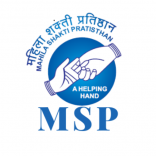Mahila Shakti Pratishthan
We Support women & children to Reach Their Full Potential
What we do
Microfinance

The rich craft heritage of India is unique and diverse as its customs and traditions. Each part of the country has its own unique cultural ethos, which is manifested in the handicrafts of that particular region. Indian crafts and handicraft traditions are influenced by local topography, climate, and socio-religious factors. These craft traditions have withstood the ravages of time and numerous foreign invasions and continue to flourish till date owing to the assimilative nature of Indian culture and broadmindedness of the craftsmen to accept and use new ideas.
The rich craft heritage of India is unique and diverse as its customs and traditions. Each part of the country has its own unique cultural ethos, which is manifested in the handicrafts of that particular region. Indian crafts and handicraft traditions are influenced by local topography, climate, and socio-religious factors. These craft traditions have withstood the ravages of time and numerous foreign invasions and continue to flourish till date owing to the assimilative nature of Indian culture and broadmindedness of the craftsmen to accept and use new ideas.
A region as large and diverse as Maharashtra in terms of culture, customs and geography is bound to develop rich repertoire of art and techniques of artistic crafts. Maharashtra is the proud home to various different artistic techniques, which have flourished under the many rulers including the Marathas, the Mughals and the British. From the paintings at Ajanta, so many hundreds of years ago, to today’s Warli paintings, Maharashtra’s ties with the Arts have always remained strong and nurturing.
The main objectives of the Organization are to assist and train artists, jewelers and crafts persons to improve techniques and absorb new ideas, develop contemporary designs, and attain international standards of excellence. . The Society will also work to secure improvement in indigenous materials, kilns, colours, and implements used by and useful to artists. Through workshops it will become a resource centre: not only can people learn the craft and about the craft through the Society; they can also learn to teach others. And as
a resource centre it proposes to have a library where books, magazines, and international publications on the subject will be made available.
Activities
- Organize Artisan Self-help groups.
- Encourage economic activity through a collective mode by creating integrated linkages.
- Provide easy access to domestic and overseas market through exhibitions.
- Upgrade skills through appropriate design and technological intervention.
- Improving quality of production and productivity to increase market share.
- Involve all members in marketing process for production, business and income.
- Set up cultural home / museum.
- Supply of Raw material for making craft.
Formation of SHG and Training

Self Help Group (SHG) is a small group of people ranging from 10 to 20, who come together with the intention of solving their common socioeconomic problem through regular savings and having access to credit, which in turn leads to the generation of livelihood and assurance of certain degree of self-sufficiency among the members (Panda, 2009).The SHG method is used by the government, NGOs and Banks worldwide. Thousands of the poor and the marginalized population in India are building their lives, their families and their society through Self help groups. The 9th five year plan of the government of India had given due recognition on the importance and the relevance of the Self-help group method to implement developmental schemes at the grassroots level. Microfinance, training and capacity building are important component of SHGs. Constant inputs of training and capacity building are required to sustain SHG. There are basically two types of training and capacity building categories: The first type is general training to all SHG members which covers group formation and introduction to linkage methods. This training includes basic literacy, book –keeping, group formation and group dynamics. Though this type of training is geared towards group management, it may impact economic variables as well. All members receive this training which is relatively homogenized. The second type relates to skill formation and Self Help Promoting Institution(SHPI) primarily administer these to more mature groups. The skill formation training aims at improving income generating activities by women self help groups.SHG members can also demand the required skill training for their group members. So, we can say that Training and capacity building measures are suggested as the prime tools to overcome the inherent problems faced by the self help groups. Therefore, in the present study investigator tries to investigate about the type of training and effectiveness of training being provided to them.
Handicraft Training & Exhibitions
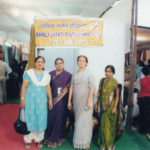
The rich craft heritage of India is unique and diverse as its customs and traditions. Each part of the country has its own unique cultural ethos, which is manifested in the handicrafts of that particular region. Indian crafts and handicraft traditions are influenced by local topography, climate, and socio-religious factors. These craft traditions have withstood the ravages of time and numerous foreign invasions and continue to flourish till date owing to the assimilative nature of Indian culture and broadmindedness of the craftsmen to accept and use new ideas.
The rich craft heritage of India is unique and diverse as its customs and traditions. Each part of the country has its own unique cultural ethos, which is manifested in the handicrafts of that particular region. Indian crafts and handicraft traditions are influenced by local topography, climate, and socio-religious factors. These craft traditions have withstood the ravages of time and numerous foreign invasions and continue to flourish till date owing to the assimilative nature of Indian culture and broadmindedness of the craftsmen to accept and use new ideas.
A region as large and diverse as Maharashtra in terms of culture, customs and geography is bound to develop rich repertoire of art and techniques of artistic crafts. Maharashtra is the proud home to various different artistic techniques, which have flourished under the many rulers including the Marathas, the Mughals and the British. From the paintings at Ajanta, so many hundreds of years ago, to today’s Warli paintings, Maharashtra’s ties with the Arts have always remained strong and nurturing.
The main objectives of the Organization are to assist and train artists, jewelers and crafts persons to improve techniques and absorb new ideas, develop contemporary designs, and attain international standards of excellence. . The Society will also work to secure improvement in indigenous materials, kilns, colours, and implements used by and useful to artists. Through workshops it will become a resource centre: not only can people learn the craft and about the craft through the Society; they can also learn to teach others. And as
a resource centre it proposes to have a library where books, magazines, and international publications on the subject will be made available.
Activities
- Organize Artisan Self-help groups.
- Encourage economic activity through a collective mode by creating integrated linkages.
- Provide easy access to domestic and overseas market through exhibitions.
- Upgrade skills through appropriate design and technological intervention.
- Improving quality of production and productivity to increase market share.
- Involve all members in marketing process for production, business and income.
- Set up cultural home / museum.
- Supply of Raw material for making craft.
Special Schemes
- Identification of Tribal Crafts and Art Objects having a linkage with the cultural heritage of Tribal Communities of Maharashtra.
- Systematic and scientific documentation of indigenous Tribal Crafts.
- Location of traditional Tribal Craft groups and identification of skilled Tribal Artisans.
- Design development in Tribal Crafts and Art Objects.
- Skill up gradation of Tribal Craft Persons.
- Employment guarantee program for Tribal Women from SHG groups in craft production.
- Provision of marketing facilities for the Tribal Artisan.
- Entrepreneurship training to the Tribal Craft Persons.
- Organization of sales centers in the important cities of the country.
10.Creation of export market for promotion of Tribal Craft and Art
Comprising artisans, community members, and experts in the fields of art like Mr. Pramod Asurlekar, Mahila Shakti Pratishthan Trust works hand in hand with traditional women from various SHG groups.
A grassroots social enterprise, Mahila Shakti Pratishthan, Pune encourages local participation in each phase of its work. Production begins with the highly developed craft traditions and is maintained at a village scale. Believing that true development grows from self determination, the Trust exposes artisans to the entire process of design, production and marketing and encourages them to participate at all stages.
Focus of work
- Bamboo work
- Stone Carving Items.
- Jari and Patchwork.
- Soft Toys.
- Dari and Carpets.
- Leather Goods.
- Jute Goods.
- Sewing- Computer Embroidery
Exhibitions
Mahila Shakti Pratishthan organized many exhibitions in the areas of Pune and aroud and so also in various cities of Maharashtra like Kolhapur, Sangli, Satara, Aurangabad, Nasik, Goa etc.
Vocational Training
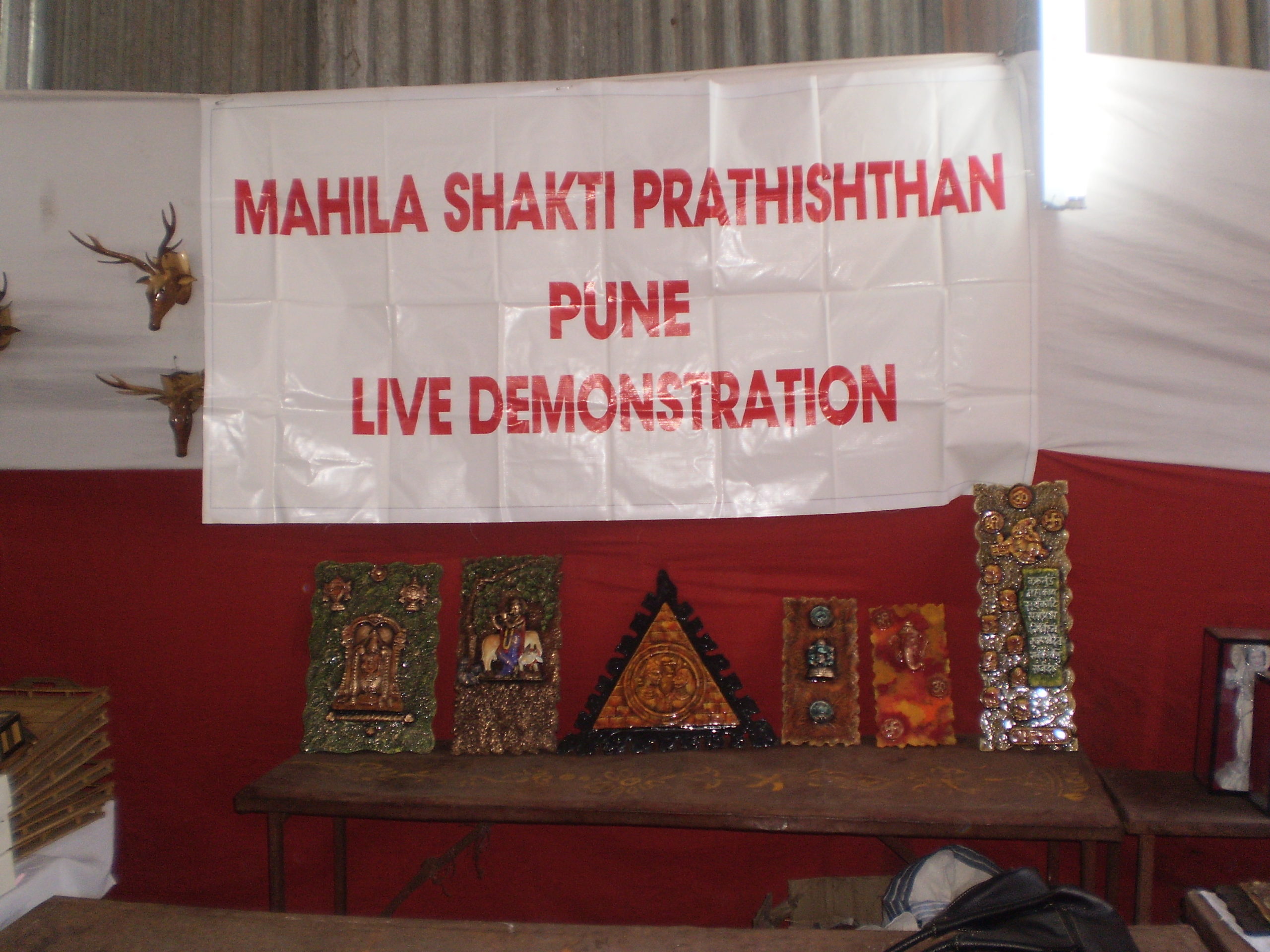
Integrated vocational training cum income generation programme for underprivileged women
The unit was set up in February 2004 to give employment opportunities to adolescent girls through means of livelihood. This is the age of self-discovery and self-development. The training were specially organized for distressed and marginalized women and the children of the underprivileged. The main trades taught are Knitting, Tailoring, Fabric, Tie and Dye, Embroidery, Bakery and Catering.
Objectives:
To develop human potential and create sustainability for the underprivileged women.
To enhance knowledge and skills of the identified groups.
To create awareness among the street children and the women regarding good health, education and nutrition, and also to provide related support services.
To arrange vocational and technical training courses for the poor and distressed women and for vulnerable groups of women to enhance their skills and enable them to lead a subsistent life.
To take necessary measures to generate income through micro-credit and allied programmes by developing self-help groups
To improve upon their existing skills.
To help them develop an independent way of living.
To develop their confidence and potential.
Achivements
- The girls at the centre have received work orders from neighboring areas.
- Products like night dresses, frocks and petticoats made by trainees are finding buyers on a regular basis.
- Behavioral problems have declined among the adolescent girls. They are more interested in training and cooperate with each other.
- The trainees now plan their own projects and define the logic framework of the work.
Mahila Shakti Pratishthan organized such vocational Trainings at Ambegaon, Narhe, Lohgaon, Wanwadi, Tathwade, Talegaon, Katraj etc…
Our courses are:
- Journalism
- Personality Development
- Spoken English
- Book Keeping & Accounting
- Computer Training
- Fashion Designing
- Beauty Parlour
- Soft Toys
- Painting
- Weaving
- Handicraft
- Jwellery Making
- Photography
- Machine and Hand Embroidery
- Candle and Agarbatti making
- Light & Classical Music
- Our Courses in Rural Areas
- Animal Management
- Goatery
- Tailoring
- Beautician
- Handicraft
- Preparation of articles for festivals
- Money management etc.
- Personality Development
- Health and Legal Awareness
- Removal of blind beliefs
- Medical free check-up camps.
- Insurance etc.
Cancer Awareness Campaign
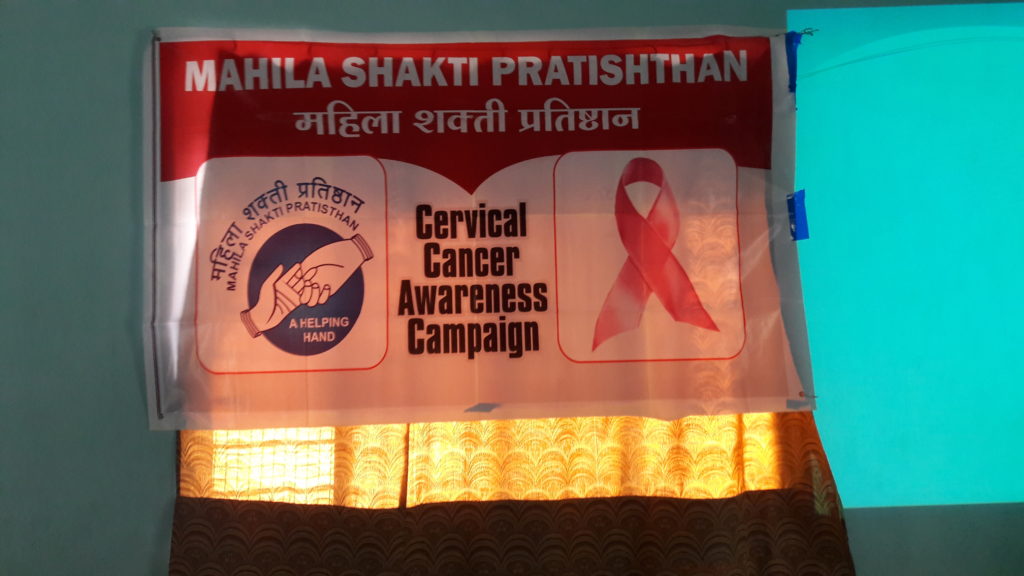
Cancer is the second leading cause of death globally, responsible for 8.8 million deaths in 2015, according to the World Health Organization (WHO), with approximately 70% of the fatalities occurring in low and middle-income countries.
Cervical cancer
Cervical cancer kills more women in India than anywhere in the world. Cervical cancer is the cancer of the mouth of the uterus. This is the only cancer that is conclusively proven to be caused in the vast majority of the cases by a virus called Human Papillomavirus (HPV).
Cervical cancer is one of India’s many healthcare ironies. It is a disease that experts say can largely be prevented. It is the first cancer in the world to have not one but two vaccines aimed at preventing it. Yet, in India it affects 1,32,000 women each year of whom 72,000 women lose their battle with it, according to the Cervical Cancer-Free Coalition. With greater awareness, it is possible to mitigate the damage done by this continuously-exploding bomb if not completely dismantle it.
Cancer is a difficult journey, both for the one who is suffering as also their care givers. In our practice in India, we have noticed that this is all the more compounded by incorrect notions and incorrect ideas in the minds of people related to treatment of cancer. We firmly believe that having a correct knowledge of cancer and its treatment is half the war won already and helps those undergoing treatment and their care givers cope up with it better. Our endeavour is to provide right guidance and correct knowledge on everything related to Cervical and Breast Cancer.
Breast cancer has replaced cervical cancer as the leading cause of cancer deaths among women in India according to a new study.
In 1990, 34,962 women died due to cervical cancer in India. In 2013, 40,985 women died due to cervical cancer while 47,587 died due to breast cancer. Cervical cancer cases, in fact, recorded the lowest increase during this period at 0.2 per cent. This is being attributed to late marriages, drop in fertility rate and better hygiene. On the other hand, breast cancer cases jumped by 166 per cent.
Mahila Shakti Pratishthan decided to work on such awareness programs because best thing is to not having the cancer at all, if it is found it would be detected in nascent stages like ‘pre-cancer’. Pre-cancer is essentially changes in the cells of the cervix that might become cervical cancer if not treated appropriately.
Mahila Shakti Pratishthan is doing Cervical and Breast Cancer Awareness Programs with the help of CPAA (Cancer Patient Aids Association) and CIPLA from 2010.
About CPAA:
Cancer Patients Aid Association (CPAA) is a 40 year old NGO working towards the “Total Management of Cancer” as a disease, which includes:
- -Raising awareness through lectures
- -Early detection through screening
- -Covering the cost of treatment through insurance
- -Providing total care for cancer patients
- -Rehabilitating cancer patients and their family members
Objective of Awareness Program:
- To present a realistic picture about cancer, its causes and treatment.
- To encourage prevention wherever possible.
- To remove stigma and help integrate cancer patients into a normal life with families.
MSP ROLE:
- To arrange resource person (Doctor)
- To bear remuneration of doctor
- To and fro charges of awareness program team
- To arrange projector and program material
This Awareness Program can be arranged for women in offices, factories, residential locations, SHGs at any place and has successfully helped to remove the fears, myths and misapprehensions, create awareness of faulty life styles and causative factors, promote the concept of periodic screening which means early detection and therefore cure. Our emphasis is on Cervical Cancer… being the most common cancers in our country and luckily, cancers that can be detected early enough to effect improved cure rates.
Mahila Shakti Pratishthan decided to work on such awareness programs because best thing is to not having the cancer at all, if it is found it would be detected in nascent stages like ‘pre-cancer’. Pre-cancer is essentially changes in the cells of the cervix that might become cervical cancer if not treated appropriately. There is a test for this called the Pap smear.
In the next step of our campaign we will also include Pap Smear Test in our program.
The Pap smear is not foolproof since there might be human error in observing cell changes, for instance. But, says the Society, it has been “more successful than any other test in preventing a cancer.” These days the Pap smear is offered by several laboratories in Indian cities. They are a part of master check-ups offered as a welfare measure by corporates to their female employees.
The sheer lack of awareness, the absence of discussions on sexual health, and the restricted access that women have to screening and treatment facilities are contributors to the large numbers of deaths. This is especially so among the lower socio-economic status,
Our plan of Action for this campaign:
Awareness programs will be organized regularly to educate the women that if detected early cancer can be cured or at least controlled for quite some time. We will organize camps, rallies, distribute pamplets and organize booths/stalls in various parts of the city.
In rural areas we will take help from local Doctors, Reporters, Grampanchayat, Jilha Parishad and other local governance for identifying places and target groups.
For raising funds for this campaign we will:
- We will organize some fundraising charity shows.
- We will keep donation boxes on prominent places.
- We will take help of CSR from Corporate sectors.
- We will design a special website for this project giving all details of the project and will try to get online donation
- We will request for people’s participation through token of donations.
- We will put banners and hoardings on public places.
Laws for Women


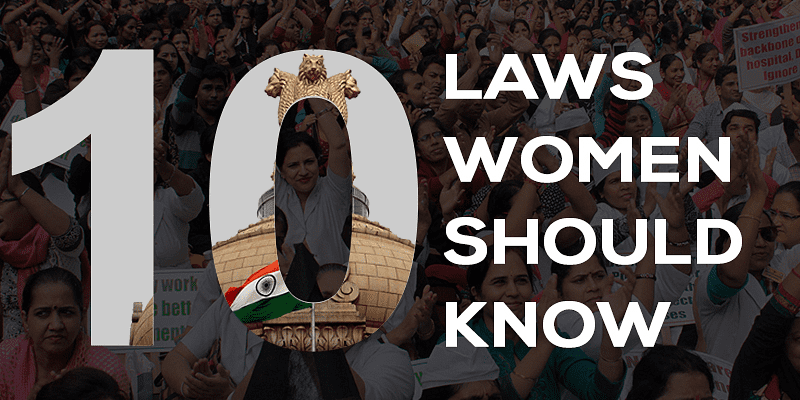
Sexual Harassment of Women at Workplace (Prevention, Prohibition and Redressal) POSH Act 2013
Sexual harassment at a workplace is considered violation of women’s right to equality, life and liberty. It creates an insecure and hostile work environment, which discourage women’s participation in work, thereby adversely affecting their social and economic empowerment and the goal of inclusive growth1. With this idea the legislature formulated the Sexual Harassment of Women at Workplace (Prevention, Prohibition and Redressal) Act 2013.
- Legal skills required extend far beyond knowledge of the POSH Act and the Rules alone. One needs to know about relevant aspects of Industrial Employment (Standing Orders Act), Shops and Establishments Act (in specific states) and the Companies Act.
- In certain cases, due to the gaps in the law, one may be required to make intelligent interpretations to effectively apply the legal provisions in practical scenarios.
- One must also know about natural justice requirements, drafting of various kinds of notices, orders, orders and evidence-related procedures.
- In addition, decision-making skills require one to arrive at a judgment based on the available facts and circumstances and appreciation of evidence, which are not imparted to lawyers as a part of their curriculum, or even in practice, unless they have been a judge or members of a tribunal or a disciplinary committee.
- In fact, when we represent clients before a court or tribunal in a legal proceeding, we develop our skills to present our clients’ case in the best possible manner. It is very different from arriving at a decision based on facts, evidence and arguments of two sides.
Domestic Violence
Domestic violence — also called intimate partner violence — occurs between people in an intimate relationship. Domestic violence can take many forms, including emotional, sexual and physical abuse and threats of abuse. Domestic violence can happen in heterosexual or same-sex relationships.
Abusive relationships always involve an imbalance of power and control. An abuser uses intimidating, hurtful words and behaviors to control his or her partner.
It might not be easy to identify domestic violence at first. While some relationships are clearly abusive from the outset, abuse often starts subtly and gets worse over time. You might be experiencing domestic violence if you’re in a relationship with someone who:
- Calls you names, insults you or puts you down
- Prevents or discourages you from going to work or school or seeing family members or friends
- Tries to control how you spend money, where you go, what medicines you take or what you wear
- Acts jealous or possessive or constantly accuses you of being unfaithful
- Gets angry when drinking alcohol or using drugs
- Tries to control whether you can see a health care provider
- Threatens you with violence or a weapon
- Hits, kicks, shoves, slaps, chokes or otherwise hurts you, your children or your pets
- Forces you to have sex or engage in sexual acts against your will
- Blames you for his or her violent behavior or tells you that you deserve it
- Threatens to tell friends, family, colleagues or community members your sexual orientation or gender identity
Laws for Women
Here are 10 laws that women should know:
- The Prohibition of Child Marriage Act, 200
- Special Marriage Act, 1954
- Dowry Prohibition Act, 1961
- Indian Divorce Act, 1969
- Maternity Benefit Act,1861
- Medical Termination of Pregnancy Act,1971
- Sexual Harassment of Women at Workplace (Prevention, Prohibition and Redressal) Act, 2013
- Indecent Representation of Women(Prevention) Act,1986
- National Commission for Women Act, 1990
- Equal Remuneration Act, 1976
